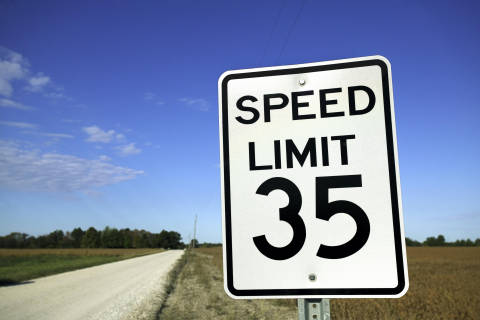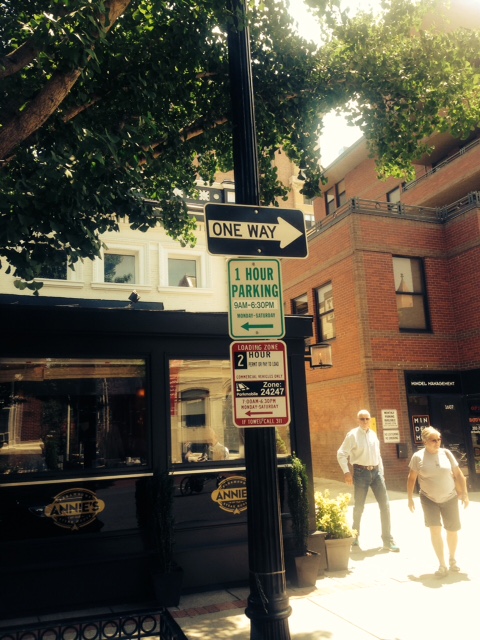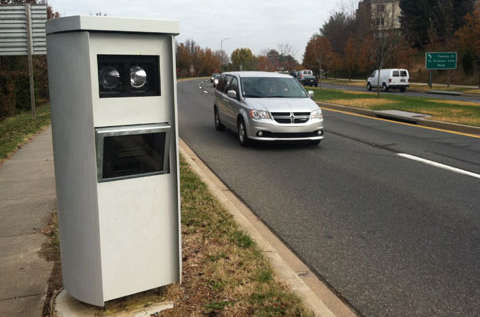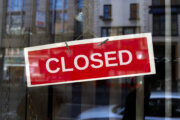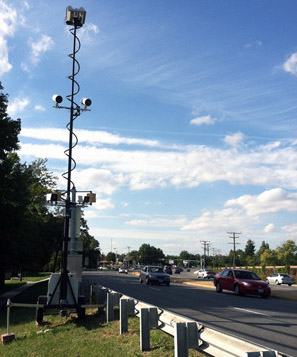
LARGO, Md. — New numbers obtained by WTOP Ticketbuster show speed cameras are slowing down drivers in Prince George’s County.
Since 2013, the number of speed camera tickets issued has dropped by one-third in Prince George’s County. In fiscal year 2013, police mailed out 360,548 speed camera tickets to drivers. Two years later, the number of tickets dropped to 240,730.
The fine for a speed camera ticket is $40.
“There are only so many roads to put speed cameras and the drivers have learned to slow down. The whole idea is to change the driver’s behavior and that’s what we’re seeing,” says Major Robert V. Liberati, who runs the speed and red light camera programs for Prince George’s County.
Liberati also points to a halo effect of the cameras: Drivers are slowing down near cameras even when police cannot issue tickets. Under Maryland law, school zone speed cameras can only operate from 6 a.m. to 8 p.m. Monday through Friday.
“I think it means we’re successful. We have been operating for almost four years in 146 different school zones in the county in which we have had speed enforcement at one point. We are seeing a definite drop in tickets, so it’s definitely a good thing for us,” says Liberati.
AAA Mid-Atlantic also applauds the numbers, pointing out that traffic safety is an important issue. The advocacy group has been supportive of the speed camera program in Prince George’s County, but critical of programs run by small independent towns like Fairmount Heights and Morningside because of questions about whether the programs violated Maryland law.
“Keep in mind that Prince George’s County actually issued more speed camera tickets in the last fiscal year than did the District of Columbia. But unlike the District, those tickets don’t arouse the sneaking suspicion of being generated for the profit,” says John Townsend, manager of public and government affairs at AAA Mid-Atlantic.
“That’s because the (Prince George’s County) speed cameras are located within school zones, which is hard to begrudge. With each passing year, the automated speed camera program is making children safer in school zones in Prince George’s County,” Townsend adds.
But critics don’t believe the drop in tickets indicates that the speed cameras work, but that the decrease underscores the polarizing effect the cameras have among the public.
“I believe, to some extent, increasing scrutiny of speed camera programs has caused many of them not to expand as quickly as they would have, or caused them to toss questionable citations more often than they might otherwise have done,” says Ron Ely of the Maryland Drivers Alliance, which opposes the cameras.
The result is a substantial decline in speed camera revenue for the police department. According to county records, Prince George’s County netted $13.1 million in revenue in fiscal year 2013. In 2014, the number dropped to $10.25 million. In 2015, the number dropped again to $8.5 million, or a 35-percent drop in revenue over two years.
Net profits for the police department are also down, dropping from $7.8 million in 2013 to $4.6 million for fiscal year 2015, which ended June 30.
“I have heard nothing but praise for this program from my commanders and from the county executive’s office. We knew in the beginning that our numbers were going to be going down. That is the nature of speed enforcement programs,” says Liberati.
He points out that any jurisdiction that depends on the profits from speed cameras will eventually see diminishing returns over time. Under Maryland law, profits from speed cameras must be spent on public safety. And the revenue cannot be diverted to pay for general government services.
When asked whether there have been any complaints about the decline in profits, Liberati chuckled.
“Never, not once. Not once have I heard that. From our perspective, it’s all about safety. The numbers are down and that’s a good thing for us,” he says.
Ely continues to insist there are better ways to get the message across. He has testified against speed cameras for several years in Annapolis.
“I think they could have done a lot more with traffic engineering solutions like adding radar display signs to improve driver awareness and safety in school zones. The cameras encourage an ‘All I have is a hammer, this must be a nail’ approach. If you have never been to a ‘speed camera day’ hearing, then you cannot truly understand how the right to face an accuser or the presumption of innocence have been undercut. That is the real cost of this,” says Ely.

